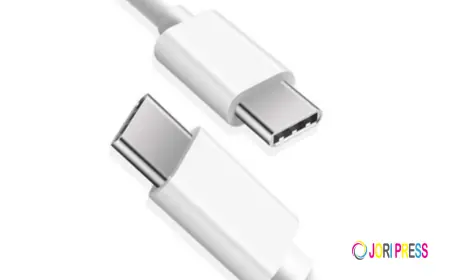AI-Powered Bug Bounties for Smart Contracts: The New Standard?
Explore how AI-powered bug bounties are revolutionizing smart contract security. Learn about the benefits, challenges, and the future of AI-driven vulnerability detection, offering faster, more cost-effective solutions for startups and businesses developing blockchain applications.

Introduction
Smart contracts have emerged as one of the most revolutionary applications of blockchain technology. These self-executing contracts, where the terms of the agreement are written into code and automatically enforced, provide businesses with efficiency, transparency, and security. From decentralized finance (DeFi) applications to supply chain management, smart contracts are changing the way industries operate. However, as with any complex system, vulnerabilities exist. These vulnerabilities can lead to severe consequences, including the loss of funds, security breaches, and reputational damage.
To mitigate these risks, the blockchain community has long relied on bug bounty programs. These programs incentivize independent security researchers, known as white-hat hackers, to find and report vulnerabilities in smart contracts before they can be exploited. Traditionally, these bounty programs have been effective, but as the complexity of blockchain technology grows, so does the difficulty of ensuring the security of smart contracts. Enter AI-powered bug bounties—an innovative solution that promises to reshape the way smart contract security is handled.
In this article, we will explore the role of AI in bug bounty programs, how it can enhance the security of smart contracts, and whether AI-powered bug bounties could become the new standard for smart contract development company.
The Traditional Approach to Bug Bounties in Smart Contract Development
What Are Bug Bounties?
A bug bounty program is a reward system where organizations offer incentives to individuals who discover and report bugs or vulnerabilities in their systems. In the context of smart contracts, bug bounty programs are used to identify vulnerabilities in the code that could potentially lead to exploits or attacks. These vulnerabilities can range from simple errors in logic to complex issues like reentrancy attacks or improper handling of user input.
The primary goal of a bug bounty program is to encourage a wide range of researchers to analyze the code from different perspectives, increasing the chances of identifying potential flaws that could have been missed by the original developers. The rewards are typically given based on the severity of the bug and the impact it could have on the system, with larger rewards offered for high-risk vulnerabilities.
Limitations of Traditional Bug Bounties
While bug bounty programs have proven effective in many cases, they have their limitations. One of the biggest challenges is the sheer complexity of modern smart contracts. As smart contracts become more sophisticated and are integrated into larger decentralized ecosystems, the number of potential vulnerabilities increases, making it difficult for human researchers to identify every possible weakness.
Moreover, traditional bug bounty programs rely heavily on the expertise of human researchers. While skilled white-hat hackers can be highly effective, they are still limited by their knowledge and experience. Furthermore, the process of identifying and reporting bugs can be time-consuming, and not all vulnerabilities are discovered during the initial bounty periods. As a result, many smart contracts still go live with undiscovered vulnerabilities, exposing them to risk.
The Rise of AI in Smart Contract Security
The Role of AI in Enhancing Smart Contract Security
Artificial intelligence (AI) has made significant strides in recent years, and its application in smart contract security is no exception. AI can analyze smart contract code at a scale and speed that far exceeds human capabilities, identifying vulnerabilities in real-time and providing automated solutions to fix them. AI algorithms can learn from past exploits, continually improving their ability to detect new and evolving threats.
By leveraging machine learning and natural language processing, AI can understand the intricacies of smart contract code, including the detection of common vulnerabilities like reentrancy, gas limit issues, and integer overflows. Additionally, AI-powered systems can simulate potential attack scenarios, providing developers with insights into how malicious actors might exploit a smart contract's vulnerabilities.
AI-Powered Vulnerability Detection
AI-powered vulnerability detection is a key advancement in smart contract security. Traditional tools for vulnerability analysis, such as static and dynamic analysis tools, rely on predefined rules and heuristics to scan code for known vulnerabilities. While these tools are helpful, they are limited by their ability to detect only known issues and patterns.
AI, on the other hand, can continuously learn and adapt, identifying both known and unknown vulnerabilities in smart contracts. Machine learning models can be trained on vast datasets of past exploits and vulnerabilities, enabling them to detect subtle patterns and anomalies that might not be immediately apparent to human researchers or traditional tools.
For example, AI can be used to analyze the behavior of smart contracts under different conditions, such as unexpected inputs or network delays, to identify potential edge cases that could lead to vulnerabilities. This ability to anticipate and simulate attack scenarios is a major advantage over traditional manual testing methods.
AI-Powered Bug Bounties: The Future of Smart Contract Security
How AI Can Transform Bug Bounty Programs
AI-powered bug bounty programs take the traditional concept of a bug bounty to the next level. Rather than relying solely on human researchers to identify vulnerabilities, AI can assist by continuously scanning smart contract code for potential issues, alerting developers to problems in real-time. This approach offers several advantages over traditional bug bounty programs.
-
Faster Detection and Response Times: AI can analyze smart contract code at a much faster rate than human researchers, identifying vulnerabilities in real-time as the code is being written or deployed. This can significantly reduce the time it takes to detect and address vulnerabilities, lowering the risk of exploits.
-
Increased Coverage: AI-powered systems can scan for a much broader range of vulnerabilities than traditional methods. By analyzing vast datasets and simulating various attack scenarios, AI can detect both known and unknown vulnerabilities that may have been overlooked by human researchers.
-
Cost-Effectiveness: Traditional bug bounty programs can be costly, especially for startups and smaller businesses that may not have the resources to offer large rewards or incentivize a wide range of researchers. AI-powered systems, on the other hand, can provide continuous security monitoring at a fraction of the cost of traditional bounty programs.
-
Real-Time Updates and Automated Fixes: AI can not only identify vulnerabilities but also provide automated suggestions for fixing them. By continuously analyzing the smart contract code, AI systems can recommend changes or optimizations to improve security. This can significantly reduce the time required for manual code audits and speed up the deployment of secure smart contracts.
-
Continuous Learning and Improvement: One of the key advantages of AI is its ability to learn from past experiences. As AI systems analyze more smart contracts and detect more vulnerabilities, they can improve their detection algorithms, becoming more effective over time. This makes AI-powered bug bounty programs scalable and adaptable to the evolving landscape of smart contract security.
The Integration of AI in Existing Bug Bounty Platforms
Many established bug bounty platforms, such as HackerOne and Bugcrowd, have begun to integrate AI-powered tools into their offerings. These platforms typically provide a marketplace where organizations can post their bug bounties and where independent researchers can participate in finding vulnerabilities. By incorporating AI into these platforms, businesses can benefit from the speed and efficiency of AI-driven security analysis, while still leveraging the expertise of human researchers.
For example, AI can be used to automatically scan code submissions for vulnerabilities before they are sent to human reviewers, helping to prioritize which issues should be addressed first. Additionally, AI can assist in managing the workflow of bug bounty programs by automatically classifying and categorizing reports based on their severity and impact.
Challenges and Considerations for AI-Powered Bug Bounties
Accuracy and False Positives
While AI can be highly effective at detecting vulnerabilities, it is not infallible. Like any machine learning system, AI-powered vulnerability detection tools are only as good as the data they are trained on. In some cases, AI may flag false positives, identifying issues that are not actually vulnerabilities. These false positives can waste valuable time and resources, and in some cases, may even lead to unnecessary fixes that do not address the real security risks.
To mitigate this risk, AI systems should be used in conjunction with human expertise. While AI can handle the bulk of vulnerability detection, human researchers should still review flagged issues to ensure that they are legitimate vulnerabilities that need to be addressed.
Ethical Considerations
AI-powered bug bounties raise important ethical questions. For example, if AI systems are used to automatically detect vulnerabilities and suggest fixes, who is responsible for the consequences if those fixes are flawed or incomplete? Additionally, there are concerns about the potential for AI to be used maliciously to exploit vulnerabilities in smart contracts, rather than detect them.
It is essential for businesses to implement robust oversight and governance frameworks to ensure that AI-powered bug bounty systems are used ethically and responsibly. This includes ensuring transparency in the AI algorithms used and holding AI systems accountable for their actions.
Conclusion: The New Standard for Smart Contract Security?
AI-powered bug bounties represent a significant step forward in the security of smart contracts. By leveraging the power of AI, smart contract developers can detect vulnerabilities faster, cover more ground, and reduce the cost and complexity of traditional bug bounty programs. As the blockchain ecosystem continues to grow and evolve, AI-powered solutions will play an increasingly important role in ensuring the security of smart contracts.
While there are still challenges to overcome, including the potential for false positives and ethical considerations, the benefits of AI in smart contract security are clear. For businesses and startups looking to secure their smart contracts, integrating AI-powered bug bounty programs into their security strategy could soon become the standard. As AI technology continues to advance, we can expect even more sophisticated and effective tools to emerge, further transforming the landscape of smart contract development and security.
Frequently Asked Questions (FAQs)
1. What are AI-powered bug bounties for smart contracts?
AI-powered bug bounties utilize artificial intelligence to automatically scan and analyze smart contract code for potential vulnerabilities. These AI systems can detect both known and unknown vulnerabilities faster and more efficiently than traditional bug bounty programs, which rely primarily on human researchers. AI can also simulate attack scenarios and provide automated suggestions for fixing issues, making smart contract security more scalable and cost-effective.
2. How does AI improve the security of smart contracts?
AI enhances smart contract security by providing faster vulnerability detection, covering a broader range of issues, and reducing human error. AI systems can continuously learn from past vulnerabilities and evolving attack techniques, improving their detection algorithms over time. Additionally, AI can identify subtle patterns and anomalies that might be missed by human auditors or traditional tools, increasing the chances of spotting potential exploits before they are discovered by malicious actors.
3. Can AI-powered bug bounties completely replace human security researchers?
While AI-powered bug bounties can significantly enhance the security review process, they are not a complete replacement for human expertise. AI can handle the bulk of vulnerability detection, but human researchers are still crucial for verifying flagged issues, resolving false positives, and applying nuanced judgment to complex security concerns. The combination of AI and human intelligence offers the most effective security approach for smart contracts.
4. What are the main benefits of using AI in bug bounty programs for smart contracts?
The key benefits of AI in bug bounty programs for smart contracts include:
-
Faster detection and response times
-
Increased coverage of potential vulnerabilities
-
Cost-effectiveness by reducing the reliance on large teams of human researchers
-
Real-time updates and automated suggestions for fixes
-
Continuous learning and improvement of AI algorithms based on past exploits
These advantages make AI-powered bug bounty programs an attractive solution for developers seeking efficient and scalable smart contract security.
5. Are there any risks associated with AI-powered bug bounties?
AI-powered bug bounties come with some risks, such as the potential for false positives, where the AI system may flag harmless code as a vulnerability. Moreover, there are ethical considerations regarding the use of AI for security purposes, particularly around accountability for AI-driven suggestions or actions. To mitigate these risks, businesses should combine AI-driven detection with human oversight to ensure the effectiveness and ethical use of AI in bug bounty programs.
Tags:
What's Your Reaction?
 Like
0
Like
0
 Dislike
0
Dislike
0
 Love
0
Love
0
 Funny
0
Funny
0
 Angry
0
Angry
0
 Sad
0
Sad
0
 Wow
0
Wow
0

















































